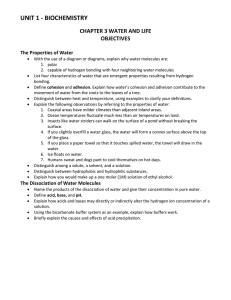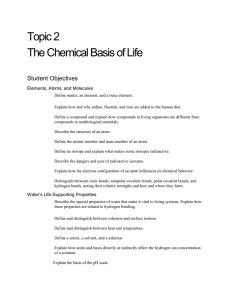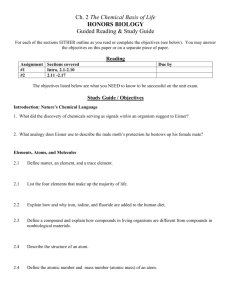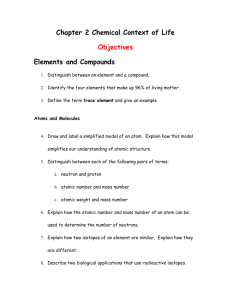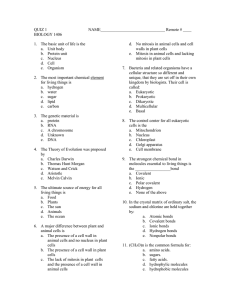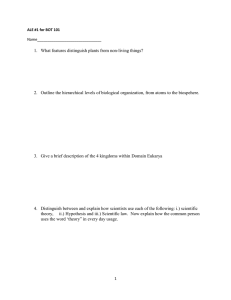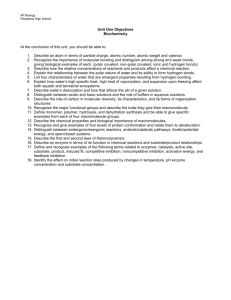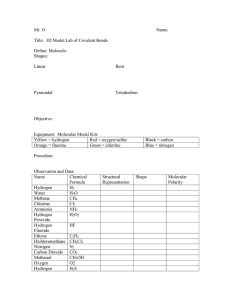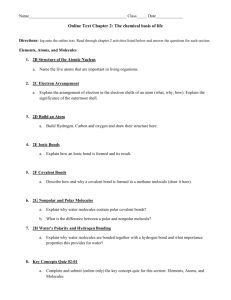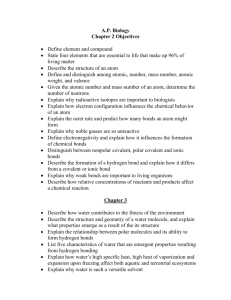Ch. 2 and 3 SG
advertisement
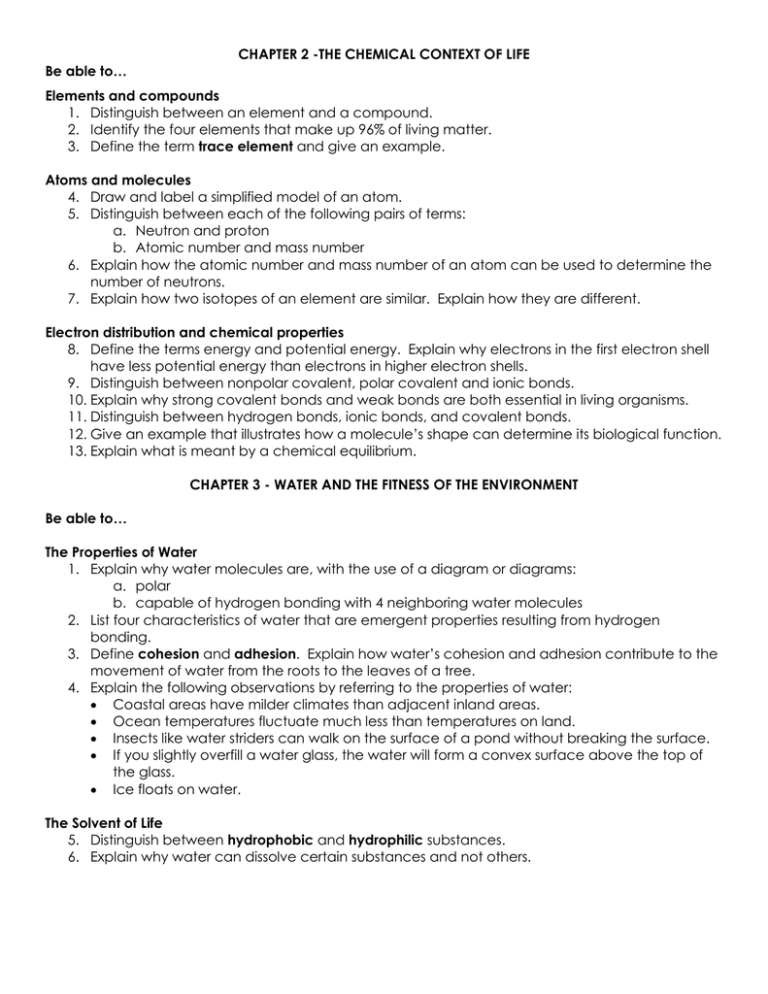
CHAPTER 2 -THE CHEMICAL CONTEXT OF LIFE Be able to… Elements and compounds 1. Distinguish between an element and a compound. 2. Identify the four elements that make up 96% of living matter. 3. Define the term trace element and give an example. Atoms and molecules 4. Draw and label a simplified model of an atom. 5. Distinguish between each of the following pairs of terms: a. Neutron and proton b. Atomic number and mass number 6. Explain how the atomic number and mass number of an atom can be used to determine the number of neutrons. 7. Explain how two isotopes of an element are similar. Explain how they are different. Electron distribution and chemical properties 8. Define the terms energy and potential energy. Explain why electrons in the first electron shell have less potential energy than electrons in higher electron shells. 9. Distinguish between nonpolar covalent, polar covalent and ionic bonds. 10. Explain why strong covalent bonds and weak bonds are both essential in living organisms. 11. Distinguish between hydrogen bonds, ionic bonds, and covalent bonds. 12. Give an example that illustrates how a molecule’s shape can determine its biological function. 13. Explain what is meant by a chemical equilibrium. CHAPTER 3 - WATER AND THE FITNESS OF THE ENVIRONMENT Be able to… The Properties of Water 1. Explain why water molecules are, with the use of a diagram or diagrams: a. polar b. capable of hydrogen bonding with 4 neighboring water molecules 2. List four characteristics of water that are emergent properties resulting from hydrogen bonding. 3. Define cohesion and adhesion. Explain how water’s cohesion and adhesion contribute to the movement of water from the roots to the leaves of a tree. 4. Explain the following observations by referring to the properties of water: Coastal areas have milder climates than adjacent inland areas. Ocean temperatures fluctuate much less than temperatures on land. Insects like water striders can walk on the surface of a pond without breaking the surface. If you slightly overfill a water glass, the water will form a convex surface above the top of the glass. Ice floats on water. The Solvent of Life 5. Distinguish between hydrophobic and hydrophilic substances. 6. Explain why water can dissolve certain substances and not others. The Dissociation of Water Molecules 7. Name the products of the dissociation of water and give their concentration in pure water. 8. Define acid, base, and pH. 9. Explain how acids and bases may directly or indirectly alter the hydrogen ion concentration of a solution. 10. Explain how buffers work.
